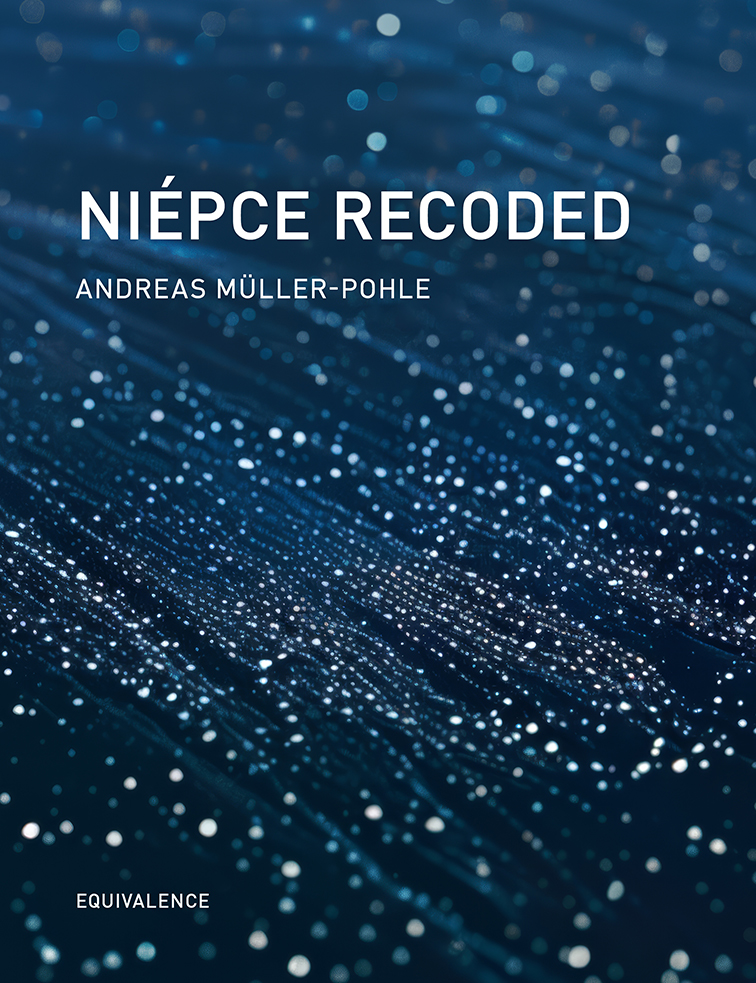
As a cybersecurity expert who has spent twenty years decoding the digital world, a photographer capturing life’s fleeting moments, and a former comic book creator weaving stories through words and art, I have always been fascinated by the interplay of technology and creativity. This is perhaps, why Andreas Müller-Pohle’s Niépce Recoded speaks directly to my soul. This project, a beautiful and unsettling journey that transforms the very first ever photograph from 1827 into a digital and AI driven meditation on imagery, echoes my own career arc. Just like my work securing data and crafting visual narratives, this exploration bridges the raw, tactile past with the pixelated possibilities of today. It is a reminder of the stories I once lettered in comics and the moments you now freeze through your lens, all while navigating the ever evolving code of the modern world as a husband and father.
Müller-Pohle’s work is a philosophical gut punch, forcing us to confront the very nature of what an image is and what it can become. The book’s core, a condensation of three transformation steps, is a masterful reflection on this journey. It begins with Niépce’s original image, then to its analogue reproduction, then to Müller-Pohle’s Digital Scores, a translation of the image into its alphanumeric code, and finally, into the unpredictable metamorphoses of artificial intelligence. This process resonates deeply with my cybersecurity ability, where decoding and securing data is paramount. The meticulous process of converting an analogue image into a digital text format showcases a profound bridge between visual art and technical precision, a duality that I navigate in my own life.
The book’s imagery is a masterful and haunting look into this new universe of photography. There is an image of pixelated white squares on a dark blue background that feels like a digital silence. This is the photograph before it becomes anything, the grid, the canvas, the raw data, stripped of content, yet carrying the haunting potential for a thousand different images. It is a foundation that feels both cold and full of possibility, an empty field waiting for a memory to be encoded. This is a visual representation of the foundational code I work with every day, the raw data that underpins all digital experience.
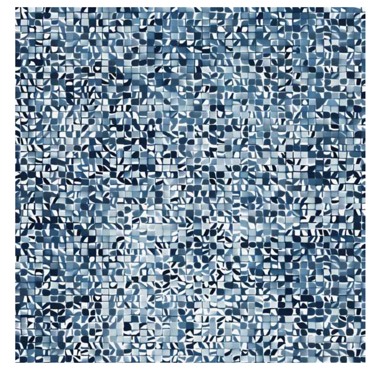
Then there is an image, with its thousands of tiny pixelated faces, that is a gut punch. It is an overwhelming mosaic of humanity, a powerful and slightly melancholic visual that speaks to the sheer volume of faces in the digital ether. It reminds me that every photograph is made up of these tiny points of information, each a potential story, a potential portrait, all of them compressed and clamouring for attention. It is a beautiful metaphor for the digital age, where every one of us is, in some way, a pixel in a vast, unknowable image.
The image that presents an abstract pixel pattern that resembles a denim fabric is where the tension truly begins. This is a digital abstraction mimicking a deeply tactile, everyday material, making me question the very nature of authenticity. Is a convincing digital pattern of denim a lie, or is it a new, simulated kind of truth? It is a compelling dialogue between the raw materiality of the world and the simulated elegance of the screen, echoing my own balance of technical precision in cybersecurity with the soulful creativity of visual storytelling. The book also features an image of a light brown linen fabric, which is a deliberate pivot back to the analogue. The seamless texture and warm tone feel like a soul settling way of seeing, a return to a physical, breathable material that holds a history of its own. After the digital abstractions, this image offers a sense of comfort and a genuine connection to the non-digital world.
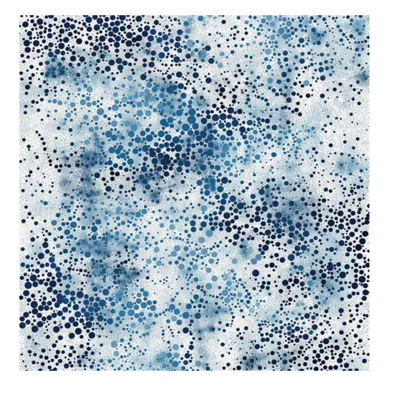
The photographs, in their abstract and pixelated forms, still manage to evoke the visceral and the tangible. The image of a beige wool carpet texture is another grounding experience, a simple, honest surface captured in a way that emphasizes its depth and physicality. It is not merely a background, it is a study in texture, light, and the quiet dignity of a familiar, worn-in space. This is followed by a light brown pattern of fine glitter, a shimmering, almost magical surface. The subtle sparkles and intricate detail remind me of the fleeting, almost magical moments we are constantly trying to trap with our cameras. Here, the digital pixel becomes something beautiful and ethereal, a kind of modern day film grain.
The most striking image, however, is a seamless pattern of light brown denim fabric with fine sparkles and glittering threads. It is a visceral fusion of the two worlds: the raw, honest texture of denim from the physical world, overlaid with the elegant, digital sparkle of glitter. It is a perfect metaphor for modern photography, the honest moment, embellished and polished for the digital frame. The book also features a flat surface of fine, dense brown glitter, which feels like a concentrated version of the earlier image. The plain white background highlights the texture, making the glitter feel almost woven, a kind of sparkling fabric spun from pure light. It is a mesmerising illustration of how a digital surface can hold a texture that feels so rich and full of detail.
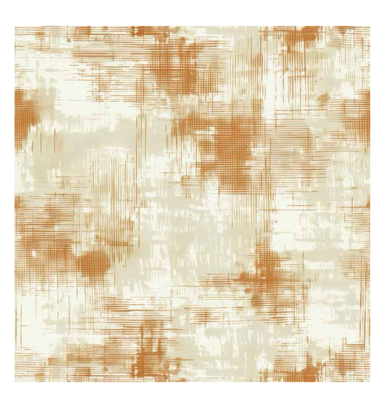
The flat texture of tiny blue and white dots feels like the most honest representation of the digital image’s core. These are the fundamental points of colour and light, scattered with a clean, almost clinical precision. It is the photographic equivalent of a code, the underlying structure from which all other images, whether of faces or fabrics, are constructed. This project’s transparency in its artistic process, documenting each step from analogue to digital to AI, aligns with my own cybersecurity ethos of clarity in protecting systems and my storytelling instinct to communicate effectively.

Müller-Pohle’s deliberate curation of these images based on singularity, diversity, and coherence parallels my photographer’s eye for composition and my comic book lettering precision. His work is not about ceding control to AI, it is about a partnership, an experiment with the “super black box” that is both a technological and cultural challenge. The book, in its entirety, is a profound and moving reflection on how the history of photography is being rewritten, one algorithm at a time. It challenges me as a photographer to consider the new possibilities of the medium and, as a father, to contemplate how these transformations will affect the memories I am working so hard to preserve for my children. This is a book that demands your attention, a crucial and invigorating exploration of what it means to make and see images today.
Regards
Alex
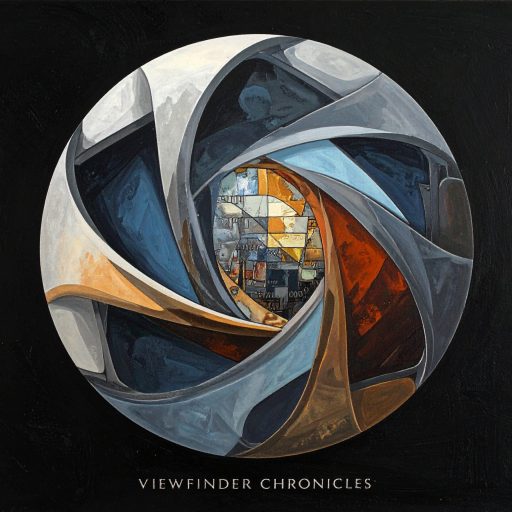
One response to “Niépce Recoded by Andreas Müller-Pohle for Equivalence (Review)”
[…] editor, Andreas Müller-Pohle, whose book `Niépce Recoded` I have already reviewed on the site lays out the unflinching conceptual framework, artificial […]